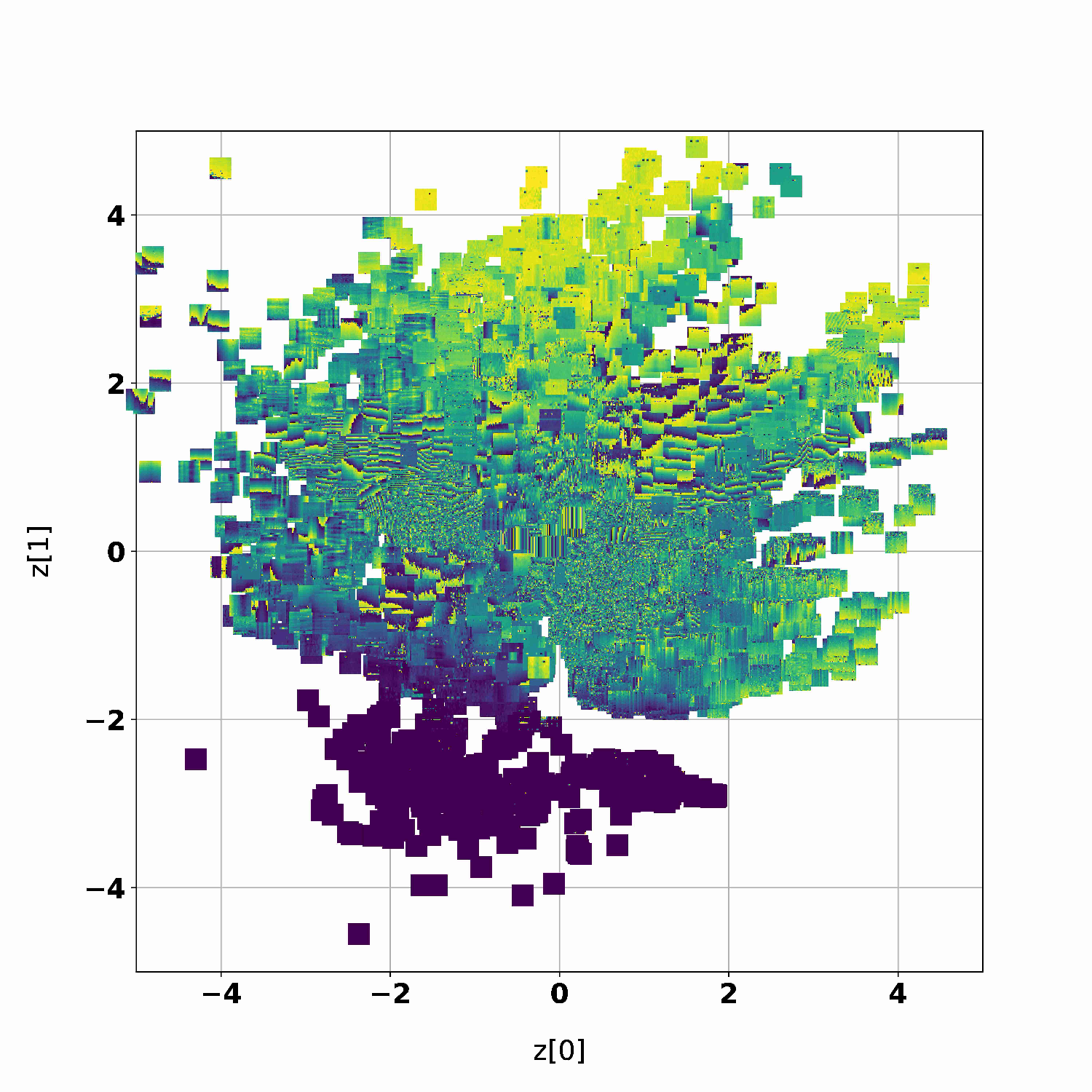Daily Image
18-06-2020Deep Learning Assisted Data Inspection for Radio Astronomy
| Submitter: | Misha Mesarcik |
| Description: | Modern radio telescopes combine thousands of receivers, long-distance networks, large-scale compute hardware, and intricate software. Due to this complexity, failures occur relatively frequently. The image relates to recently published work where we propose the novel use of artificial intelligence (AI) to automatically diagnose system problems for modern radio telescopes. The AI-based model is a Variational Autoencoder (VAE) that allows data captured from LOFAR to be displayed in a more prescriptive manner. Thereby enabling telescope operators with a more effective method to analyse data. The image shows an example of LOFAR visibility phase spectrograms located in an abstract two-dimensional space (embedding). The model places similar spectrograms close to each other. Horizontal structures and vertical structures are grouped together in separate groups, as are noise like spectrograms and smooth ones. Autocorrelations have zero phase and are visible as dark patches below -0.8. All visibilities with zero phase and zero amplitude are located at coordinates (-4.2,-2.5). This image shows that the VAE approach groups spectrograms with similar structures close to one another. Our goal is to use images like this for system health management: images that show corrupted data due to a defect will be outliers and can easily be spotted by the operators. We did however find that complicated compounded spectrograms with several distinct image features are not so easily grouped, and this is subject of further research. |
| Copyright: | Mesarcik et al. 2020 (MNRAS in press: https://doi.org/10.1093/mnras/staa1412) |
| Tweet |  |
